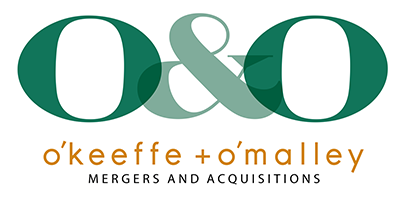Terminology Often Used When Selling/Buying a Business (Part 1)
Nov 10, 2016
Add-on Company–Private equity groups (PEGs) will acquire additional businesses to add to an existing “platform company.” The platform company is a company that was previously acquired with the intention of combining it with other “add-on” acquisitions. These add-ons are typically smaller enterprises.
Adjusted Book Value–The net result of increasing and decreasing the balance sheets assets and liabilities to a more realistic fair market value.
Adjusted Earnings–Restating the net income of a company by increasing or decreasing expenses and income items that are extraordinary, excessive, non-recurring and/or perks of an owner. Interest, taxes, depreciation and amortization may also be adjusted out.
Asset Sale–When the seller agrees to sell most assets of the business and some liabilities to a buyer, which will exclude debt. It’s different than a stock sale where the entire entity would be sold including cash and debt.
EBITDA–Earnings (net income) before interest, taxes, depreciation and amortization.
Book Value–The cost of assets as stated on a balance sheet of a company, less accumulated depreciation and amortization (D&A). It may also be described as the assets less intangibles, D&A and liabilities.
Capitalization Rate–The rate of return on a business or piece of real estate, which is calculated by taking the operating net income divided by the market value.
Confidential Offering Memorandum (COM)–A document that contains a detailed description of the business being sold and its potential opportunities. It describes the history of the business, products, services, competitors’ facilities, and financials. Prospective buyers, that have executed a NDA, review the document to see if it’s a business in which they’re interested. Some parties also call them Confidential Information Memorandum (CIM), Confidential Business Review (CBR) and the Book.
Deal–a term often used among M&A advisors describing a business they are representing.
Deal Killers–When selling a business there are specific issues on either side that may not be resolved to the satisfaction of either party. This results in the transaction not be consummated between the two parties.
Dealmaker–A person who facilitates mergers and acquisitions of businesses.
Discount Rate–Part of a calculation of present value, used when preparing a discounted cash flow analysis (DCF) of future cash flows.
Dry Powder–Private equity groups (PEGs) will often use this term to define the amount of committed capital the groups have in their portfolios available to invest in other business acquisitions within a specific amount of time.
Due Diligence–The investigation into a potential business investment in order to confirm all material components of the business including the financial statements, employees, customers, competition, and assets and liabilities of the past and foreseeable future. This normally occurs once a Letter of Intent is executed.
Earn-out–In a transaction where a component of the price of the business being sold is contingent on some event happening in the future, for example, based on future sales, gross profit or earnings. When the contingency event happens, the seller will receive additional proceeds that were predefined in the purchase agreement. If the event doesn’t occur as defined, the seller will not receive additional proceeds.
Economic Life–The time period in which assets may be depreciated or written off. This is usually shorter than the actual asset’s physical life.
Excess Cash–The amount of cash that is more than what a business enterprise needs to operate through normal business cycles, and is retained on the balance sheet. In an M&A transaction the excess cash is usually retained by the seller.
Excess Working Capital–Working capital is the amount of current assets that exceeds current liabilities. Excess working capital is an amount that exceeds what is needed to run the business, which normally means that the additional assets are not necessary or are not being used properly for operations.
Exit Plan–A contingency plan prepared regarding the business owner’s intentions on how they wish to get out of the business at some estimated time in the future, with the goal of protecting the business and its owners. A well-defined plan should maximize proceeds to the owners when they leave.
Fair Market Value (FMV)–The price that a willing buyer is prepared to pay and a willing seller is prepared to accept. Both parties are knowledgeable about the facts of the business and are not under any pressure or influence to buy or sell.
Financial Buyers–The most common type of buyers who are interested in a business in order to realize a return on their investment that offers growth and enhancement opportunities. Strategic buyers are interested in combining some part of the operations in order to expand their products and services.
Indication of Interest (IOI)–A non-binding informal written document that a buyer may submit to a seller expressing their genuine interest in the business, and informing the seller what they are considering offering in terms of early-stage price and terms. This often precedes an LOI and is submitted before the buyer has relevant information, and before the buyer has spent significant time and money on the potential transaction. In other words, the buyer wants to see if the seller’s price and terms are in the ball park prior to diving in.
Letter of Intent (LOI)–A written agreement that outlines the buyer’s and seller’s preliminary understanding of each other, and includes the price, terms and conditions of moving forward. Most of the LOI will be non-binding, but taking the business off the market for a period of time and giving the buyer access to complete due diligence may be binding. The document is often negotiated back and forth several times until both parties are willing to execute it.
To be continued next month
